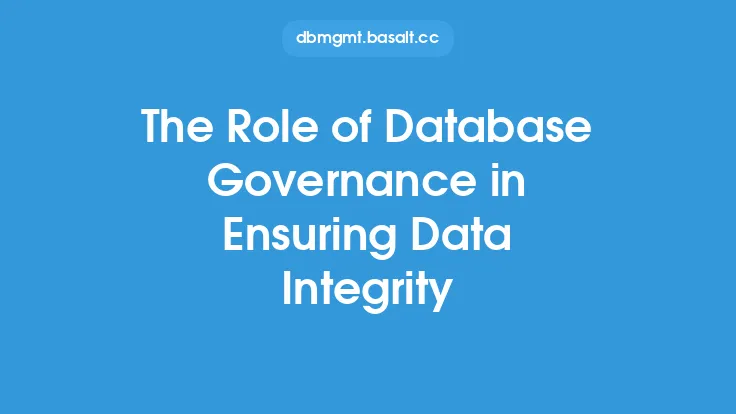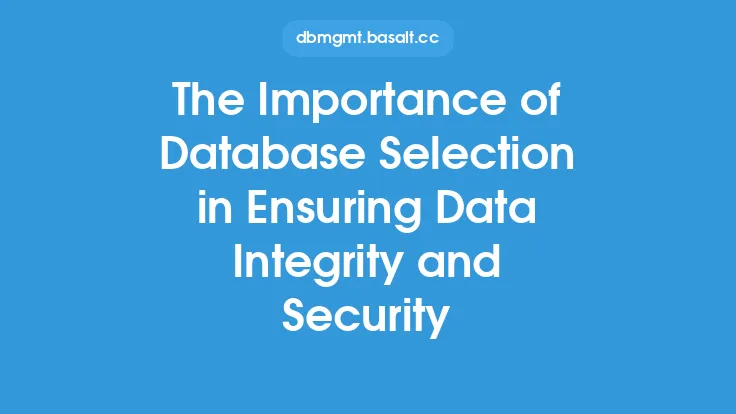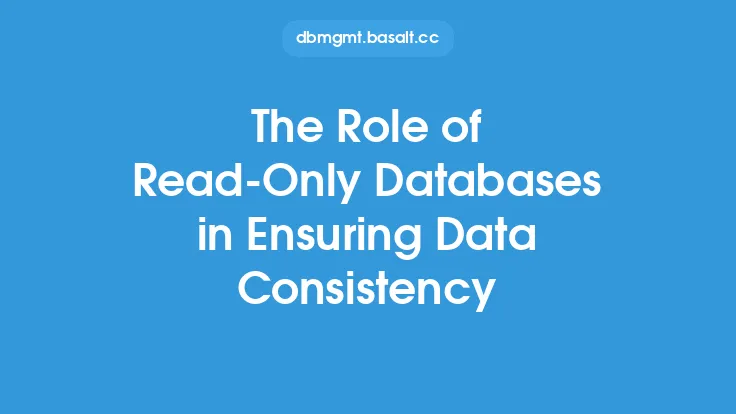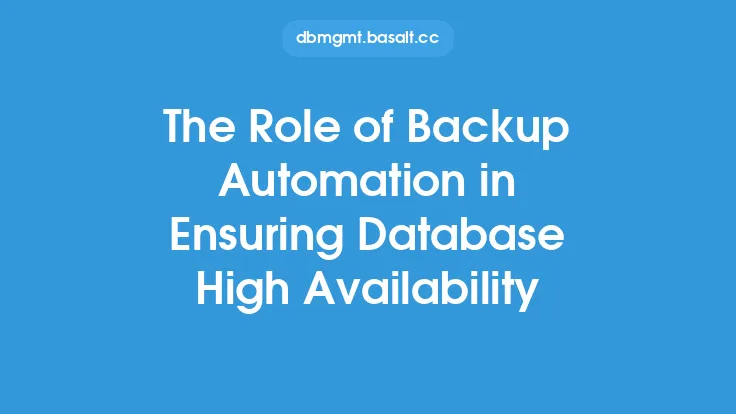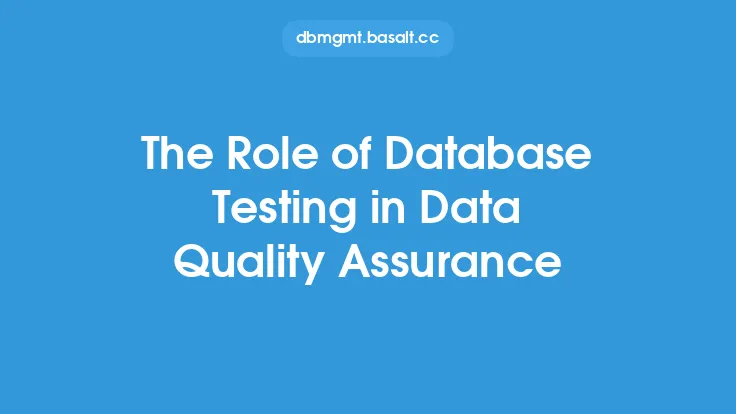Database documentation plays a vital role in ensuring data integrity, which is a critical aspect of database administration. Data integrity refers to the accuracy, completeness, and consistency of data within a database. It is essential to maintain data integrity to ensure that the data is reliable, trustworthy, and usable. Database documentation is a crucial component in achieving data integrity, as it provides a clear understanding of the database structure, relationships, and constraints.
Introduction to Data Integrity
Data integrity is a fundamental concept in database administration, and it is achieved through a combination of techniques, including data validation, data normalization, and data constraints. Data validation ensures that the data entered into the database is accurate and consistent, while data normalization eliminates data redundancy and improves data integrity. Data constraints, such as primary keys, foreign keys, and check constraints, ensure that the data is consistent and reliable. Database documentation provides a clear understanding of these constraints and relationships, making it easier to maintain data integrity.
The Role of Database Documentation in Ensuring Data Integrity
Database documentation serves as a blueprint for the database, providing a detailed description of the database structure, relationships, and constraints. It includes information about the tables, columns, data types, indexes, and relationships between tables. This documentation is essential for ensuring data integrity, as it provides a clear understanding of the data and its relationships. With accurate and up-to-date database documentation, database administrators can identify potential data integrity issues and take corrective action to prevent data corruption or inconsistencies.
Technical Aspects of Database Documentation
From a technical perspective, database documentation involves creating a detailed description of the database schema, including the relationships between tables, indexes, and constraints. This documentation can be created using various tools and techniques, such as entity-relationship diagrams, data flow diagrams, and database design languages like SQL. The documentation should include information about the data types, formats, and ranges, as well as any data validation rules or constraints. Additionally, the documentation should provide information about the database storage, including the location of the data files, log files, and backup files.
Benefits of Database Documentation in Ensuring Data Integrity
The benefits of database documentation in ensuring data integrity are numerous. Firstly, it provides a clear understanding of the database structure and relationships, making it easier to identify potential data integrity issues. Secondly, it ensures that the data is consistent and reliable, which is critical for making informed business decisions. Thirdly, it reduces the risk of data corruption or inconsistencies, which can have serious consequences for the organization. Finally, it improves the overall quality of the data, making it more accurate, complete, and trustworthy.
Best Practices for Creating Effective Database Documentation
To create effective database documentation, several best practices should be followed. Firstly, the documentation should be accurate, complete, and up-to-date. Secondly, it should be easy to understand and navigate, with clear and concise language. Thirdly, it should include information about the database schema, relationships, and constraints. Fourthly, it should be stored in a secure and accessible location, with version control and backup procedures in place. Finally, it should be reviewed and updated regularly to ensure that it remains accurate and relevant.
Common Challenges in Creating and Maintaining Database Documentation
Despite the importance of database documentation, several challenges can arise when creating and maintaining it. Firstly, the documentation can become outdated or inaccurate, which can lead to data integrity issues. Secondly, the documentation can be incomplete or inconsistent, which can make it difficult to understand the database structure and relationships. Thirdly, the documentation can be difficult to navigate or understand, which can lead to confusion and errors. Finally, the documentation can be lost or corrupted, which can have serious consequences for the organization.
Conclusion
In conclusion, database documentation plays a critical role in ensuring data integrity, which is essential for maintaining accurate, complete, and consistent data. By providing a clear understanding of the database structure, relationships, and constraints, database documentation helps to prevent data corruption or inconsistencies, improves data quality, and reduces the risk of data integrity issues. By following best practices for creating and maintaining database documentation, organizations can ensure that their data is reliable, trustworthy, and usable, which is critical for making informed business decisions.
